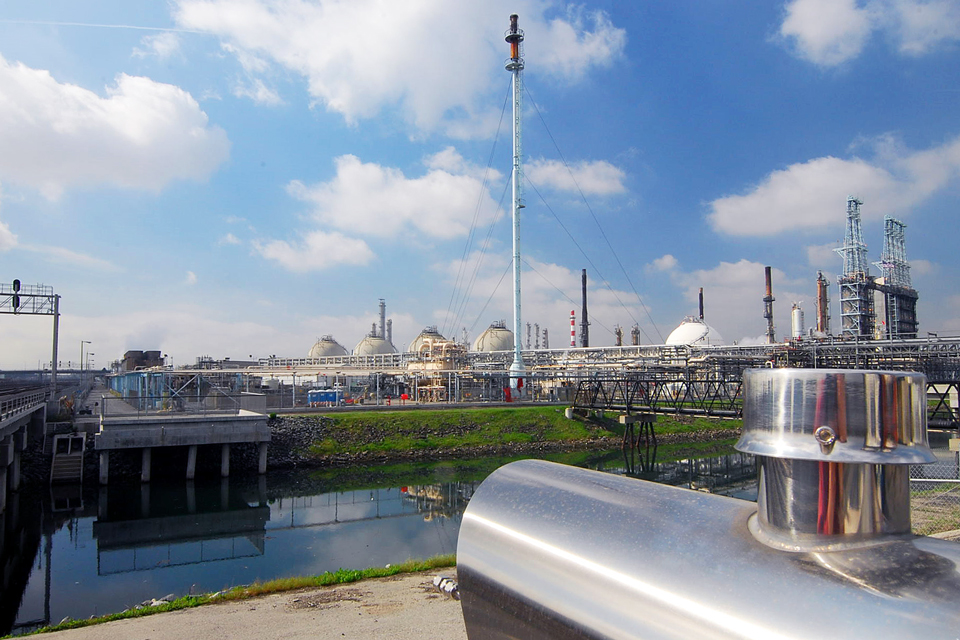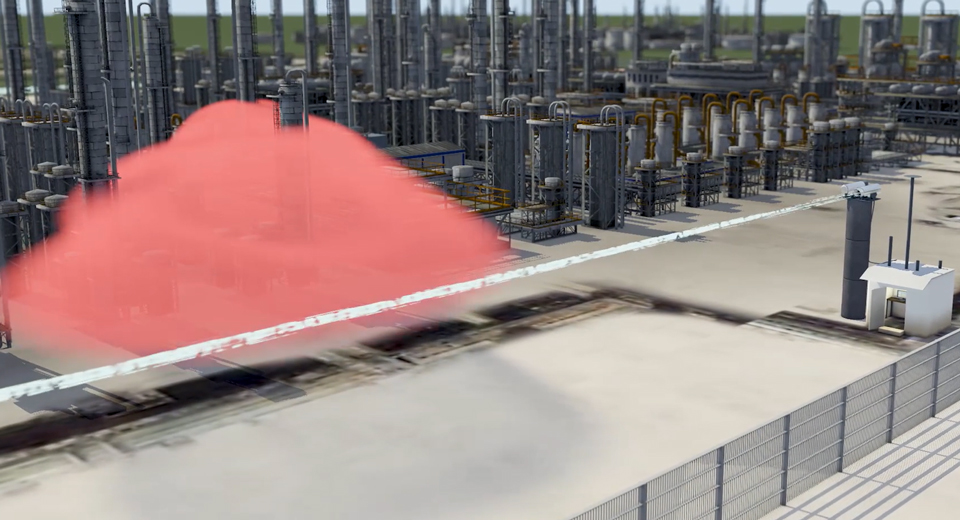2024-11-25
What’s Going on in the Air at Chemical Industries?

Many of the chemicals in play at chemical industries can be directly or indirectly harmful to living organisms. It is therefore essential to minimize planned emissions to air and to protect humans and the environment around the industries in case of unplanned releases of process gases.
Fence-line Monitoring
A clever approach to air quality monitoring at an industry is fence-line monitoring. It is what it sounds like: monitoring takes place in multiple positions along the perimeter of an industrial production unit. It can be along the outer perimeter of the entire site, or it can frame a specific part of the industry within the site. Fence-line monitoring enables surveillance of the air quality in general, and in combination with meteorological data also for example the ability to establish the net contribution to air pollution from the site and to pinpoint from wherein the area the emissions originate.
The pollutants to monitor depend on the chemicals in play in the production processes. At a refinery, it can for example be benzene (C6H6) or other hydrocarbons, at a chemicals manufacturer it may be a matter of keeping an eye on chlorine (Cl2) or chloride compounds. The pollutant of concern at a metal smelter can be sulfur dioxide (SO2) or hydrogen fluoride (HF), while a paper mill might wish to monitor hydrogen sulfide (H2S) levels.
Net Emissions, Tracing Leakages
Fence-line monitoring in combination with wind speed and wind direction information provide a powerful tool to study air quality-related issues at an industry. One application is to establish the net contribution from the industrial site to overall air pollution. Simplified, it is achieved by comparing gas concentrations on the lee side of the industry with those on the windward side. Any increase must have a local origin, lack of increase means no contribution. There are examples of surprising outcomes, where the polluter has turned out to be completely different entity than what seemed to be the apparent source.
Another application is finding locations of leaks, perhaps occurring diffusely and even being unknown to the operator. Multiplying the concentration with the wind speed gives the flux. By investigating the flux under varying wind directions at a specific section of the site perimeter, it is possible to pinpoint the direction (the maximum vector) to one or more local sources of emissions. Doing this at multiple sections and under varying wind directions, the maximum vectors will cross at the location or locations of the emissions. The more data the more accurate positioning of the source.
Leak tracing is not only a matter of protecting health and the environment. It can also mean savings for the operator when unknown leaks of production chemicals are found and sealed.
Accidental Release Alarms
In cases of an accidental release of pollutants to the air, the first priority may be to issue warnings to the workers at the site as well as to the public around the site. This function is readily available in a fence-line monitoring system which can react automatically under any wind direction. Practically, it is a matter of comparing real-time gas monitoring results with permissible pollutant levels. In case of exceedances, alarms providing gas and wind data can be issued immediately to the operator of the industry, to authorities, and to other appropriate receivers.
Alarms should be issued when the pollutant thresholds are exceeded, but only then. Otherwise, the trust in the systems will quickly be lost, whether due to false or missed alarms. Quality assurance is therefore vital. A solid quality management system including calibration checks, planned maintenance activities, and preparedness for system disruptions should always be in place when monitoring air quality, but it is extra important in cases of alarm applications. It can literally be a matter of life and death.

An illustration of an accidental release of gases, approaching the viewpoint. As soon as the red cloud crosses the white beam of light, the analyser in the shelter can react and trigger an alarm.
Compliance with Air Quality Standards
Diffuse emissions and accidental releases can contain multiple types of gases, but it may be sufficient to just monitor a single or a few signature gases. Findings based on those gases probably also apply to other types of pollutants. Keeping down the number of gases being monitored also reduces the complexity of the system, the cost of acquisition and maintenance, and the risk of anything going wrong with the system.
However, some types of monitoring systems readily provide true multi-component monitoring at low extra costs, both in terms of investments and required maintenance. It may then be a good idea to let such system also serve as a general air quality monitoring station, keeping an eye on non-site-specific pollutants regulated under generic air quality standards. By example, a plastics manufacturer monitoring chlorine along the fence-line may also utilize the system to monitor the general air quality by measuring concentrations of for example sulfur dioxide, nitrogen dioxide (NO2), and ozone (O3). This may open for cooperation including co-financing of the monitoring system between the industry and for example local health authorities.
Monitoring as a Planning Tool
Environmental and planning authorities may face challenging questions that need clear and accurate answers. Is it advisable to allow a housing area to be established close to an industrial site? What environmental requirements should be imposed on a new production site next to an existing one in order not to risk exceeding environmental standards? Long time series of fence-line monitoring data can give important input to surveys providing answers. This is another example where fence-line monitoring can be made in cooperation between the industry and authorities.
Open-path Monitoring – the Best Choice
The OPSIS open-path DOAS monitoring system is a good example of a multi-component monitoring system with excellent performance characteristics and low maintenance needs. Monitoring along an open light path makes it an ideal tool for fence-line applications. Compared to point-sampling devices, the ability to detect and characterize a locally emitted pollutant is much better. A single monitoring system can also be configured with multiple monitoring paths making it an even more cost-effective system solution.
The reliability and low maintenance need of the OPSIS DOAS system provide for simple quality assurance routines that do not risk deterioration by time. It is a system for many years of reliable operation, and many years of trustworthy monitoring results. Whether the system is applied to industrial air quality management, used for air quality alarm applications, utilized to document compliance with environmental standards, as a tool for city planning, or any combination of these objectives, the OPSIS open-path DOAS monitoring system is the right choice.
Feel free to get in touch with OPSIS or either of its representatives to find out how an OPSIS monitoring system can meet your needs and expectations!
